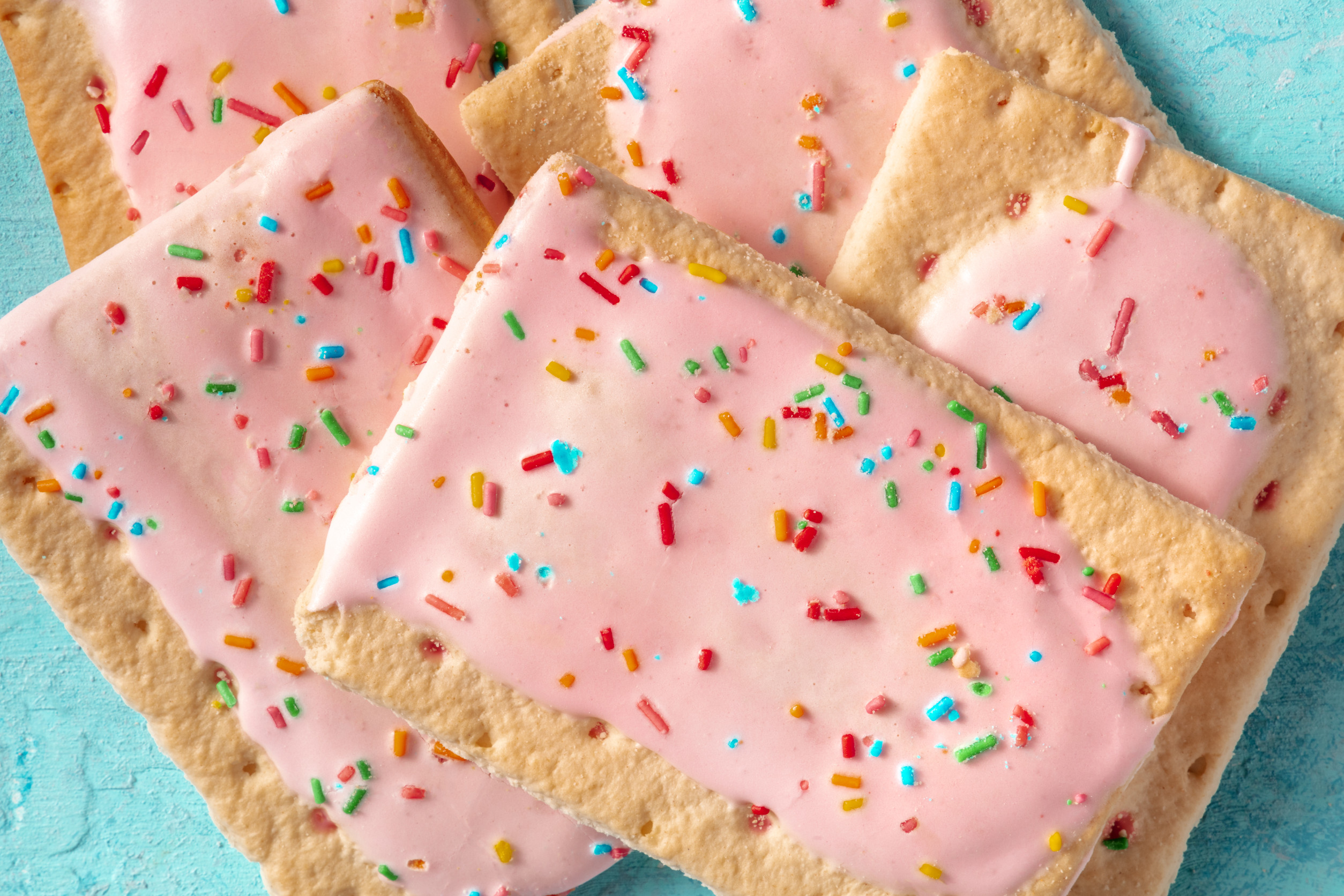
Breakfast may be the most important meal of the day, but depending on what you eat, it might also be the most controversial. Many popular breakfast items in the U.S. contain food dyes, preservatives, or additives that are banned in other countries due to health concerns. From cereals to toaster pastries, these foods line American grocery store shelves—even though their ingredients are restricted overseas. So why are these ingredients banned abroad but still allowed here? Let’s take a closer look at eight everyday breakfast foods with banned breakfast ingredients that may make you think twice about your morning routine.
1. Kellogg’s Frosted Flakes
Frosted Flakes are a staple in many American households, especially for kids. But what most people don’t realize is that this sugary cereal contains artificial food dyes like Yellow 6 and BHT (butylated hydroxytoluene). Yellow 6 has been linked to hyperactivity in children and is banned in Norway and Finland, while BHT is banned in Japan and parts of the European Union due to concerns about its potential to cause cancer. In the U.S., it’s still widely used as a preservative. That colorful bowl of cereal might be a little more controversial than it looks.
2. Eggo Waffles
Frozen waffles are a fast, kid-friendly breakfast solution—but they come with a list of questionable additives. Eggo waffles often contain artificial flavors and preservatives such as TBHQ (tertiary butylhydroquinone), a chemical banned in several countries, including the U.K. and Japan. TBHQ has been linked to tumors in lab animals and potential immune system effects. While the FDA permits it in small amounts, its presence in everyday breakfast foods has raised red flags elsewhere. If you’re reaching for convenience, check the label for banned breakfast ingredients like TBHQ.
3. Pop-Tarts
Pop-Tarts are a breakfast favorite for anyone in a rush, but these toaster pastries are loaded with additives that wouldn’t fly in many other countries. Artificial food dyes like Red 40, Yellow 6, and Blue 1 give these pastries their appealing look—but these dyes are banned or heavily restricted in the European Union. Additionally, some varieties still contain BHT for freshness, despite international pushback. For something that seems like a childhood treat, Pop-Tarts come with a surprisingly controversial ingredient list. Many health-conscious consumers are now seeking dye-free alternatives.
4. Jimmy Dean Breakfast Sandwiches
Ready-to-eat breakfast sandwiches may be convenient, but they can come with a chemical cocktail. Jimmy Dean’s frozen breakfast sandwiches often include propyl gallate, an antioxidant preservative banned in countries like the U.K. due to potential cancer concerns. Combined with nitrates and sodium-heavy ingredients, these breakfast sandwiches pack more than just protein. While the U.S. still allows these additives in processed meats and egg products, other countries have drawn a harder line. If you’re concerned about banned breakfast ingredients, this is one to skip or swap with homemade versions.
5. Quaker Instant Oatmeal (Flavored Varieties)
Oatmeal sounds healthy, but flavored instant varieties from Quaker often contain artificial colors and sweeteners. Ingredients like caramel color and artificial flavors have come under fire internationally for containing byproducts linked to cancer in animal studies. In the U.S., they remain legal, but countries in Europe have demanded labeling or outright removal of these additives. Many consumers assume oatmeal is a safe choice without realizing how flavored packets change the equation. Choosing plain oats and adding your own fruit or cinnamon is a smarter way to avoid banned breakfast ingredients.
6. McDonald’s Hash Browns
If your morning includes a drive-thru hash brown, you may be consuming more than just potatoes and oil. McDonald’s hash browns in the U.S. contain preservatives like sodium acid pyrophosphate, which is banned or restricted in several countries for potential health impacts. These additives help keep the potatoes from turning gray, but at what cost? Other nations have found alternative methods that don’t involve controversial chemicals. If you’re eating fast food in the morning, know that what’s allowed in the U.S. isn’t always considered safe elsewhere.
7. Starbucks Breakfast Sandwiches
Even premium brands aren’t immune to using questionable ingredients. Some Starbucks breakfast sandwiches contain emulsifiers and preservatives like carrageenan, which has been banned in infant formula in the European Union due to concerns about digestive inflammation. While it’s still approved in the U.S., the debate over carrageenan’s safety continues. This seaweed-derived thickener is found in more foods than you might think, especially in prepared and processed breakfasts. If you’re trying to avoid banned breakfast ingredients, even a fancy coffeehouse breakfast may not be exempt.
8. Yoplait Yogurt
Yogurt is often seen as a health food, but flavored varieties like Yoplait can contain added sugars, food dyes, and thickeners that are banned abroad. Some formulations include Blue 1 and Red 40—dyes that face restrictions in Europe and are linked to behavioral concerns in children. Additionally, gelatin and stabilizers may be used to create a creamy texture at the expense of natural ingredients. While yogurt itself is nutritious, the extras in some brands could make it less healthy than it appears. Choosing plain, organic yogurt is a better bet if you’re trying to avoid banned additives.
What You Eat Might Be Fine Here—But Not Everywhere
The U.S. food system allows many additives that are banned or restricted in other countries due to health and safety concerns. These banned breakfast ingredients often show up in popular, seemingly harmless foods that families eat every day. While these items are still available on American shelves, growing awareness is prompting consumers to read labels more carefully and demand cleaner options. Knowing what’s in your food—and why it’s banned elsewhere—can help you make more informed choices at the breakfast table. What looks like a quick meal might be carrying more risk than you realized.
Drop your thoughts in the comments—what ingredient do you avoid that others might not even know about?
Read More
7 Breakfast Brands Being Pulled From Shelves Across the Country
6 Breakfast Cereals We Desperately Miss
The post 8 Popular Breakfast Items With Ingredients Banned Abroad appeared first on Grocery Coupon Guide.







